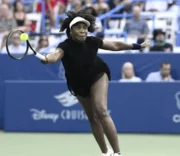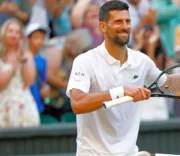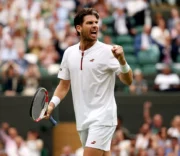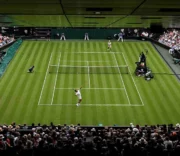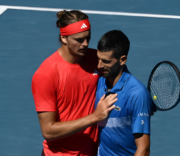
As the tennis world celebrates the unexpected return of Caroline Wozniacki, it’s time we reconsider the definition of “retirement” in the context of this sport. Unlike the general perception, retirement in tennis increasingly seems to be a pause rather than a permanent exit.
The Retirement Paradox
The cycle of announcing retirements with much ceremony, only to backtrack later, has become quite a trend among tennis stars who seem to have reached a plateau in their career. Such “un-retirements” call into question the authenticity of the initial retirement announcement.
Does this mean retiring has become a facade? Not necessarily. It is common for the flame of passion to re-ignite, or for a young athlete to rethink their decision. An early exit from the game can be dramatic and can also open up opportunities for renewed publicity and income sources such as ‘farewell’ tours and exhibitions. However, it becomes misleading when the farewell isn’t quite a farewell.
Tennis Channel analyst Pam Shriver weighs in on this phenomenon:
“I think a lot of players (who retire) think they’re not going to come back and play. They’ve had it. Put a bow on the career and leave,” says Shriver. “Then they realize that it’s an amazing job to have, and if they haven’t reached the ‘no regrets’ phase there isn’t much time left. So they come back.”
The Tale of Un-Retirements: A Retrospective
With her recent un-retirement, Wozniacki joins an illustrious list of former World No. 1s, predominantly women, who have made similar decisions to return to the game. The lineage of such comebacks can be traced back to Margaret Court and includes Martina Navratilova, Martina Hingis, Justine Henin, and Kim Clijsters. The latter, a habitual un-retirer, has done so thrice in her career.
| Player | Number of Un-Retirements |
|---|---|
| Margaret Court | 1 |
| Martina Navratilova | 1 |
| Martina Hingis | 1 |
| Justine Henin | 1 |
| Kim Clijsters | 3 |
In the midst of this trend, Serena Williams stands out for not making any definitive statement about her retirement plans.
In contrast, other tennis champions have either been more assertive about their retirement or chosen a quieter exit.

Taking a Stand: The Chris Evert and Angelique Kerber Cases
Chris Evert, a current ESPN analyst, decided to retire when she felt burned out. Speaking about her own departure, Evert says,
“I was 34 and burned out. I knew I wasn’t going to come back. I had my first child and that was that.”
Similarly, three-time Grand Slam champion and former World No. 1 Angelique Kerber quietly exited the game a year ago without a grand declaration. Given her age (35) and her recent journey into motherhood, it’s unlikely she will return.
Wozniacki: A Case Study in Context
Traditional reasons for early retirement often include injury or chronic illness. For Wozniacki, her struggle with rheumatoid arthritis was the primary reason for her first farewell from the court. Following her retirement, Wozniacki got married and gave birth to two children.
However, her arthritis has now become manageable, as she notes, “The long break seems to have done wonders for my recovery.” And so, she finds herself stepping back into the game.
The Triggers of Un-Retirement: A Dual Perspective
The reasons for un-retirement among many players can be bifurcated into two categories: monetary incentives and parenthood. Many top stars, due to the financial security they’ve amassed, can afford to take a break from the rigorous demands of professional life. The desire to start a family often plays a significant role in this decision. However, transitioning to a “normal” life can be more challenging than anticipated, and even the joys of parenthood may wane over time.
For financially secure players who decide to un-retire, several obstacles do not exist as they do for less affluent mothers. For instance, they can afford child-care support and additional hotel rooms for privacy during tournaments.
Recognizing these challenges, the tennis tour has gradually eased conditions for less successful mothers. One notable contribution is the 1984 “Terry Holladay Rule.”
The Terry Holladay Rule and Its Impact
This rule allows players to return to the main draw of six tournaments if they resume the tour within a year of childbirth. This rule was named after Terry Holladay, who was ranked No. 39 the year this rule was introduced.
In an interview, Holladay shared her challenging experience of returning to the tour after childbirth, owing to the lack of supervised child-care facilities at tournaments at the time.
“I had to go around begging people,” Holladay said. “It was very stressful.”
Holladay’s example illustrates the significant struggles faced by less affluent players who choose to return to the game after starting a family. The “Terry Holladay Rule” was a step towards addressing these challenges, but there’s still a long way to go.
In conclusion, un-retirement is a complex phenomenon in the world of tennis. The return of Caroline Wozniacki brings this issue to the forefront once again, challenging our understanding of what it truly means to “retire” in tennis.













